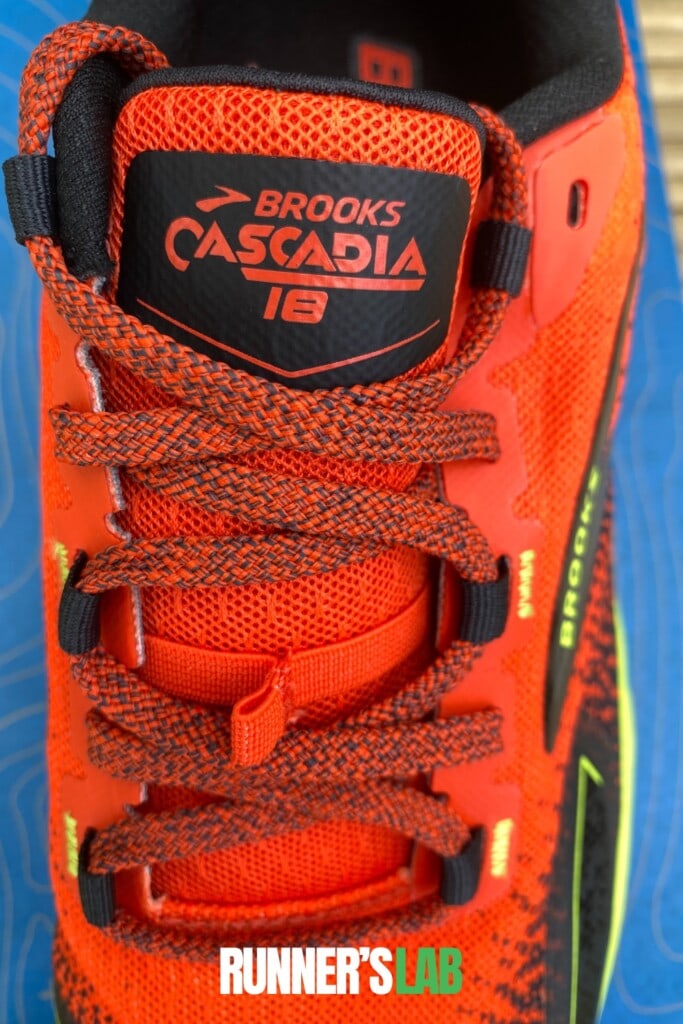In today’s fast-paced world, staying committed to fitness can be challenging due to various obstacles such as time constraints, lack of motivation, and unrealistic expectations. Understanding how to effectively set fitness goals, craft personalized workout plans, and incorporate flexibility and recovery strategies is essential for achieving long-term success.
This article provides practical insights into identifying barriers to your fitness journey and offers actionable solutions to overcome them. Additionally, it emphasizes the importance of monitoring your progress and staying motivated, ensuring that you remain engaged and focused on your fitness aspirations.
In this article you will find:
Understanding Your Fitness Goals
Embarking on a fitness journey is an empowering decision that can transform not only your body but also your overall well-being. However, the key to success lies in clearly defining your fitness goals. By understanding what you want to achieve, you can tailor your workout plans and maintain motivation throughout your journey.
Defining Your Fitness Objectives
The first step in understanding your fitness goals is to identify specific objectives that resonate with you. These objectives can vary widely depending on individual aspirations, lifestyle, and health considerations. Here are some common fitness goals:
- Weight Loss: Aiming to shed excess pounds for health or aesthetic reasons.
- Muscle Gain: Focusing on building strength and muscle mass.
- Improved Endurance: Enhancing cardiovascular fitness for better stamina.
- Flexibility and Mobility: Increasing range of motion and reducing injury risk.
- Overall Health: Maintaining a balanced lifestyle for physical and mental well-being.
By pinpointing what you want to accomplish, you can create a focused approach that maximizes your efforts.
Setting SMART Goals
Once you have a general idea of your fitness objectives, it’s crucial to refine them using the SMART criteria. SMART goals are:
- Specific: Clearly define what you want to achieve.
- Measurable: Establish criteria to track progress.
- Achievable: Ensure the goals are realistic and attainable.
- Relevant: Align your goals with your values and lifestyle.
- Time-bound: Set a deadline for achieving your goals.
For example, instead of saying, “I want to get fit,” a SMART goal would be, “I will run a 5K in under 30 minutes within the next three months.” This clarity provides motivation and direction.
Identifying Barriers and Solutions
Understanding your fitness goals also involves recognizing potential barriers that could hinder your progress. Common obstacles include:
- Lack of time
- Limited access to equipment
- Motivational challenges
- Unrealistic expectations
By identifying these barriers early, you can develop strategies to overcome them. For instance, if time is an issue, consider shorter, high-intensity workouts that can be completed in 30 minutes. This adaptability allows you to stay committed to your goals.
The Importance of Reflection and Adjustment
As you progress on your fitness journey, it’s essential to regularly reflect on your goals and make adjustments as necessary. Life circumstances, interests, and capabilities may change, which can impact your objectives. Regularly assessing your progress and being willing to modify your goals keeps you engaged and focused.
For more insights on setting effective fitness goals, check out this ACE Fitness article that provides additional strategies and tips.
Understanding your fitness goals is the foundation of a successful fitness journey. By setting clear objectives, employing the SMART framework, identifying barriers, and being open to adjustments, you can create a roadmap that guides you toward achieving your aspirations and unlocking your full potential.
Crafting Personalized Workout Plans
Creating a personalized workout plan is a vital step in achieving your fitness goals. A well-structured routine not only aligns with your specific objectives but also accommodates your individual preferences, fitness level, and lifestyle. Here’s how to craft a workout plan that is tailored just for you.
Assessing Your Current Fitness Level
The first step in crafting a personalized workout plan is to assess your current fitness level. Understanding where you stand helps in designing a program that is both effective and safe. Consider the following aspects:
- Strength: Evaluate your ability to lift weights and perform bodyweight exercises.
- Endurance: Test your cardiovascular fitness through activities like running, cycling, or swimming.
- Flexibility: Determine your range of motion with stretches and mobility exercises.
- Skill Level: Assess your experience with different types of workouts, such as resistance training, HIIT, or yoga.
By gaining a clear understanding of your current abilities, you can set a solid foundation for your personalized workout plan.
Incorporating Your Fitness Goals
Once you have assessed your fitness level, the next step is to incorporate your personal fitness goals into the plan. Aligning your routine with your objectives ensures that you stay focused and motivated. Here’s how to do it:
- Weight Loss: Include more cardio sessions and circuit training to burn calories efficiently.
- Muscle Gain: Focus on resistance training with progressive overload to build strength.
- Increased Endurance: Integrate longer, steady-state cardio workouts and interval training.
- Improved Flexibility: Add regular stretching or yoga sessions to enhance mobility.
By structuring your workouts around your specific goals, you can maximize results and stay committed to your fitness journey.
Structuring Your Weekly Routine
To create a balanced workout plan, it’s essential to structure your weekly routine. A well-rounded approach should include various types of training to prevent boredom and overuse injuries. Here’s a sample weekly structure:
- Monday: Upper body strength training
- Tuesday: Cardio (running, cycling, or swimming)
- Wednesday: Lower body strength training
- Thursday: Active recovery (yoga or light stretching)
- Friday: Full-body circuit training
- Saturday: Long-duration cardio or outdoor activity
- Sunday: Rest day
This structure allows for muscle recovery while ensuring a comprehensive approach to fitness.
Choosing the Right Exercises
Selecting the right exercises is critical in crafting your personalized workout plan. Focus on a mix of compound and isolation movements to target various muscle groups effectively. Here are some exercise categories to consider:
- Compound Movements: Exercises that work multiple muscle groups (e.g., squats, deadlifts, bench presses).
- Isolation Movements: Target specific muscles (e.g., bicep curls, tricep extensions).
- Cardiovascular Exercises: Activities like running, cycling, or HIIT to boost heart health.
- Flexibility Exercises: Stretching and yoga to improve range of motion and reduce injury risk.
By incorporating a variety of exercises, you can ensure a balanced workout that keeps you engaged and motivated.
Monitoring Progress and Making Adjustments
Lastly, it’s essential to monitor your progress and make adjustments to your workout plan as needed. Keep a fitness journal or use apps to track your workouts, noting improvements in strength, endurance, and flexibility. If you find certain workouts are no longer challenging, it may be time to increase weights, change exercises, or modify your routine to avoid plateaus.
For more tips on crafting effective workout plans, check out this Verywell Fit article that provides additional insights.
Incorporating Flexibility and Recovery
Flexibility and recovery are essential components of a comprehensive fitness regimen. While many people focus primarily on strength and endurance training, neglecting these aspects can lead to injuries, decreased performance, and hindered progress. Here’s how to effectively incorporate flexibility and recovery into your workout routine.
The Importance of Flexibility
Flexibility refers to the range of motion around a joint and is crucial for overall physical performance. Increased flexibility can enhance your workouts in several ways:
- Improved Performance: Greater flexibility allows for more efficient movement, which can enhance your performance in strength training, cardio, and sports.
- Injury Prevention: Flexible muscles and joints are less prone to strains and tears, reducing the risk of injuries during workouts.
- Better Posture: Flexibility exercises can help correct muscular imbalances, promoting better alignment and posture.
- Enhanced Recovery: Stretching can increase blood flow to muscles, facilitating faster recovery after intense workouts.
Integrating flexibility training into your routine is vital for maintaining a balanced approach to fitness.
Types of Flexibility Training
There are various methods to improve flexibility, each serving different purposes. Consider incorporating the following types into your routine:
- Static Stretching: Holding a stretch for a prolonged period (15-60 seconds). This is best performed after workouts to help relax muscles and improve flexibility.
- Dynamic Stretching: Involves moving parts of your body through a full range of motion. This is ideal as part of your warm-up routine to prepare muscles for activity.
- PNF Stretching: Proprioceptive Neuromuscular Facilitation involves contracting and relaxing muscles to improve flexibility. It often requires a partner and is highly effective.
Incorporating a mix of these flexibility training methods can provide a comprehensive approach to improving your range of motion.
Prioritizing Recovery
Recovery is equally important as the workouts themselves. It involves allowing your body to heal and adapt after physical exertion. Here are key recovery strategies to consider:
- Active Recovery: Engage in low-intensity activities, such as walking or cycling, on rest days to promote blood flow and alleviate soreness.
- Rest Days: Schedule regular rest days to give your muscles time to repair and grow stronger. Overtraining can lead to fatigue and increased injury risk.
- Nutrition: Proper nutrition is crucial for recovery. Focus on consuming adequate protein, carbohydrates, and healthy fats to support muscle repair and energy replenishment.
- Hydration: Staying hydrated helps transport nutrients and supports metabolic functions, making it vital for recovery.
Implementing these recovery strategies can enhance your performance and overall well-being.
Listening to Your Body
One of the most critical aspects of incorporating flexibility and recovery is learning to listen to your body. Signs of fatigue, persistent soreness, or decreased performance can indicate the need for additional recovery. Adjusting your workout intensity, frequency, or duration based on how you feel can lead to better long-term results.
Utilizing Technology for Recovery
In today’s digital age, technology can play a significant role in your recovery process. Consider using:
- Fitness Trackers: Devices that monitor your activity levels, heart rate, and sleep patterns can help you gauge your recovery needs.
- Recovery Apps: Apps that provide guided stretches, foam rolling routines, and recovery protocols can enhance your flexibility training.
- Massage Tools: Foam rollers, massage balls, and percussion massagers can aid in muscle recovery and flexibility.
For more insights on the significance of flexibility and recovery, check out this Healthline article that delves deeper into effective recovery strategies.
Staying Motivated and Tracking Progress
Staying motivated throughout your fitness journey can often be challenging, but it is essential for achieving your goals. Equally important is tracking your progress, which not only helps you stay accountable but also allows you to celebrate your achievements along the way. Here’s how to maintain motivation and effectively track your progress in a meaningful way.
Finding Your Source of Motivation
Motivation can fluctuate, making it crucial to identify what drives you. Here are some powerful sources of motivation to consider:
- Personal Goals: Set clear, achievable goals that resonate with you on a personal level. Whether it’s losing weight, gaining strength, or running a marathon, having specific targets keeps you focused.
- Community Support: Engage with a community of like-minded individuals, whether in-person or online. Support from friends, family, or fitness groups can provide encouragement and accountability.
- Visual Inspiration: Use motivational quotes, images, or success stories to remind yourself why you started. Create a vision board that reflects your fitness aspirations.
- Tracking Your Progress: Seeing tangible results can be a powerful motivator. Document your achievements and milestones to fuel your determination.
Understanding what motivates you personally will help you remain committed to your fitness journey.
Implementing Effective Tracking Techniques
Tracking your progress is crucial for recognizing your achievements and staying motivated. Here are several effective methods to consider:
- Fitness Apps: Utilize fitness tracking apps to log workouts, monitor nutrition, and record progress. Apps like MyFitnessPal or Strava can provide valuable insights.
- Workout Journal: Keep a dedicated journal where you can write down your workouts, achievements, and feelings about your progress. This personal reflection can enhance motivation.
- Before-and-After Photos: Taking progress photos can visually document your transformation over time. This serves as a powerful reminder of how far you’ve come.
- Regular Assessments: Conduct periodic fitness assessments, such as measuring your strength, endurance, and flexibility. This will allow you to see improvements quantitatively.
By employing these tracking techniques, you can effectively monitor your journey and make informed adjustments as needed.
Celebrating Milestones
Recognizing and celebrating milestones is vital for maintaining motivation. Achievements, no matter how small, deserve acknowledgment. Here are some ways to celebrate:
- Set Mini-Goals: Break larger goals into smaller, manageable milestones. Celebrate each mini-goal achieved to maintain enthusiasm.
- Reward Yourself: Treat yourself with non-food rewards when you reach certain milestones. This could include new workout gear, a massage, or a fun activity.
- Share Your Success: Share your achievements with your support network. Celebrating with others can amplify your sense of accomplishment.
By celebrating milestones, you reinforce positive behaviors and build a sense of achievement that fuels further motivation.
Dealing with Setbacks
Setbacks are a natural part of any fitness journey, but how you respond to them can make all the difference. Here are strategies to handle setbacks:
- Reframe Your Mindset: Instead of viewing setbacks as failures, see them as opportunities to learn and grow. Identify what caused the setback and adjust your plan accordingly.
- Stay Flexible: Life can be unpredictable, and sometimes your fitness routine may need to adapt. Be open to modifying your plan without feeling discouraged.
- Seek Support: Don’t hesitate to reach out to your support network during tough times. Sharing your challenges can provide relief and encouragement.
By adopting a positive approach to setbacks, you can maintain your motivation and continue progressing toward your goals.
Utilizing Technology for Motivation and Tracking
Incorporating technology can enhance both your motivation and tracking efforts. Consider using:
- Wearable Devices: Fitness trackers or smartwatches can monitor heart rate, steps, and calories burned, providing real-time feedback on your activity levels.
- Online Challenges: Participate in virtual fitness challenges or competitions that can motivate you to push your limits while connecting with others.
- Social Media: Use platforms like Instagram or Facebook to follow fitness influencers or join groups that inspire you and keep you accountable.
For further insights on staying motivated and tracking your progress, explore this Verywell Fit article that offers additional strategies and tips. Understanding your fitness goals is crucial for success. Clearly define your objectives using the SMART criteria—Specific, Measurable, Achievable, Relevant, and Time-bound. Assess potential barriers such as lack of time or equipment and develop strategies to overcome them. Regular reflection and adjustment of your goals will help maintain focus and engagement throughout your fitness journey.
Crafting a personalized workout plan involves assessing your current fitness level, incorporating specific goals, and structuring a balanced weekly routine. Include flexibility and recovery in your regimen to enhance performance and prevent injuries. Stay motivated by tracking your progress through fitness apps, journals, and celebrating milestones. Embrace setbacks as learning opportunities, and utilize technology to support your motivation and tracking efforts.




